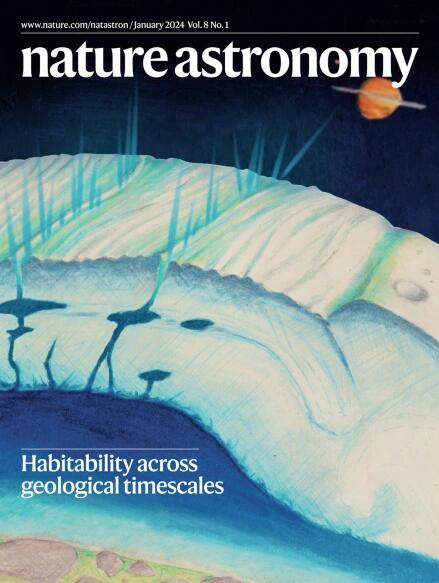金星干燥的内部表明这颗行星从来就不适合居住
IF 12.9
1区 物理与天体物理
Q1 ASTRONOMY & ASTROPHYSICS
引用次数: 0
摘要
金星大气的组成是众所周知的,很可能是由火山气体补充的。分析表明,火山喷发是缺水的,这意味着地球的地幔是干燥的。这与金星长期干燥的表面和不适宜居住的情况是一致的。本文章由计算机程序翻译,如有差异,请以英文原文为准。


A dry interior for Venus suggests the planet was never habitable
The composition of Venus’s atmosphere is well known, and is likely being replenished by volcanic gases. Analysis suggests that the volcanic eruptions are water-poor — implying that the planet’s mantle is dry. This is consistent with Venus having had a long-lasting dry surface and never having been habitable.
求助全文
通过发布文献求助,成功后即可免费获取论文全文。
去求助
来源期刊

Nature Astronomy
Physics and Astronomy-Astronomy and Astrophysics
CiteScore
19.50
自引率
2.80%
发文量
252
期刊介绍:
Nature Astronomy, the oldest science, has played a significant role in the history of Nature. Throughout the years, pioneering discoveries such as the first quasar, exoplanet, and understanding of spiral nebulae have been reported in the journal. With the introduction of Nature Astronomy, the field now receives expanded coverage, welcoming research in astronomy, astrophysics, and planetary science. The primary objective is to encourage closer collaboration among researchers in these related areas.
Similar to other journals under the Nature brand, Nature Astronomy boasts a devoted team of professional editors, ensuring fairness and rigorous peer-review processes. The journal maintains high standards in copy-editing and production, ensuring timely publication and editorial independence.
In addition to original research, Nature Astronomy publishes a wide range of content, including Comments, Reviews, News and Views, Features, and Correspondence. This diverse collection covers various disciplines within astronomy and includes contributions from a diverse range of voices.
 求助内容:
求助内容: 应助结果提醒方式:
应助结果提醒方式:


